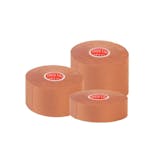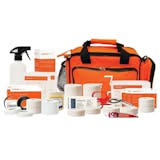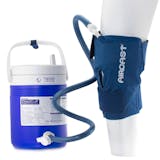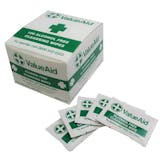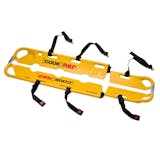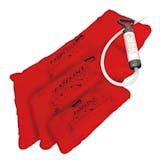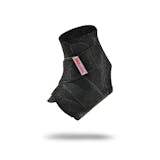Pectoral Tears and Strains
What are Pectoral Tears and Strains?
The pectoral muscles (pecs) are located at the front of the chest, they are made up of two muscles. The larger of the two is called the pectoralis major muscle, this extends from the sternum across the ribs and collar bone to the humerus (upper arm). The pectoralis minor (the smaller of the two muscles) originates at the front of the ribs and attaches to the front of the shoulder blade. The pectoral muscles assist with movements of the shoulder blade. During stretching or contracting the pectorals experience tension. This tension can become excessive with high repetition or high force, this can cause pectoral muscles to tear. This injury is known as a pectoral strain. Pectoral tears, as with other muscle, ligament, and tendon tears are graded on severity: Grade 1: a small number of fibres are torn resulting in some pain, but allowing full function. Grade 2: a significant number of fibres are torn with moderate loss of function. Grade 3: all muscle fibres are ruptured resulting in major loss of function. Pectoral strains are most commonly grade 2 tears.
Causes
Pectoral strains usually happen very suddenly, when working at high intensity. Most often when weight training that puts pressure on the pectoral muscle group. For example; bench presses, chest presses or pectoral fly's. It is possible for a pectoral strain to develop over time due to the repetitive nature of certain activities, it is a very common injury in both CrossFit and MMA. More commonly in older athletes following an inadequate warm-up.
Signs and Symptoms
People suffering from a pectoral tear often describe a sudden pain or tearing sensation in the chest or front of the shoulder. In minor cases, it may be able to continue sport with just a slight increase of the normal aches and pains that are normal post exercise. In severe cases the pain may prevent the individual from performing further activity. In the most severe cases muscle wastage is possible, this can form a palpable hole (or visible deformity) in the muscle and will most likely require surgical intervention. Generally in an average tear pain will be obvious when pressure is applied to the affected pectoral muscle as well as when attempting to stretch pectoral muscles or performing movements that require engagement of the pectoral muscles. Bruising, swelling, muscle spasm and weakness may also be experienced.
Diagnosis
An examination from a physiotherapist is usually sufficient to diagnose a pectoral strain. Further investigations such as an X-Ray, Ultrasound, CT scan or MRI scan may be required to confirm diagnosis, rule out other conditions and assess the severity of injury.
Treatment
Most minor to moderate cases of a pectoral strain that have not been present for long can usually recover within a few weeks with rest. In more severe or chronic cases recovery can be a lengthy process and may take many weeks to months to achieve an optimal outcome. Those patients with a complete pectoral tear that requires surgery, usually require a period of rehabilitation of 3 – 9 months or longer before returning to full activity. Provide instant pain relief and reduce inflammation with Hot & Cold Therapy products Restrict movement and aid the healing process with Shoulder Supports Aid your recovery and re-build your strength with Resistance Bands


